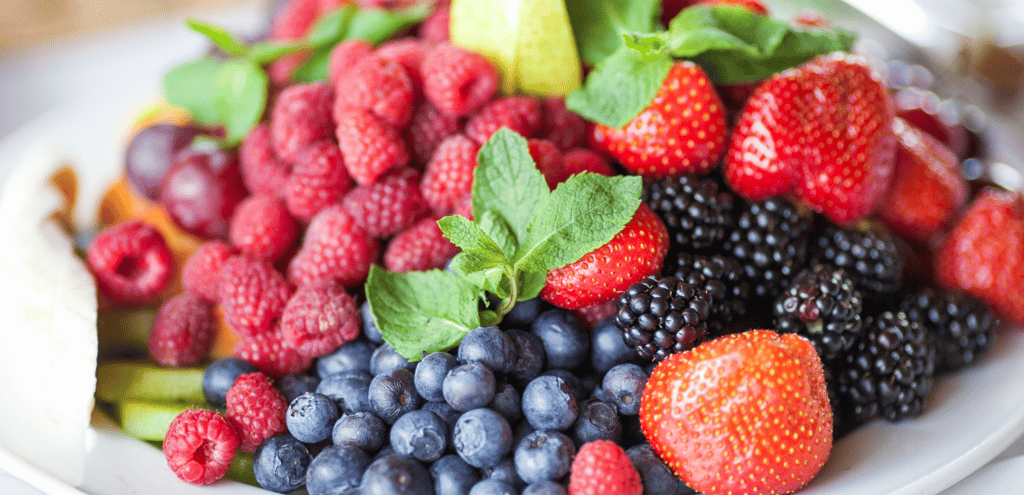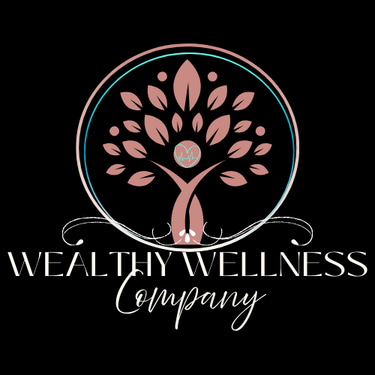The Firefighters in Your Food: Your Ultimate Antioxidants Guide
PROACTIVE WELLNESS - PREVENTIONTHE KITCHEN CURE: GOOD FOOD, GOOD MOOD - NUTRITIONTHE LATEST!!


We hear the word "antioxidants" all the time in the wellness world. We're told to eat more of them, that they're in blueberries, green tea, and dark chocolate. But what are we really talking about? To truly harness their power, you need to understand the role they play on your team. So let's decode this essential concept together.
The Game Within: Understanding Oxidative Stress
Imagine your body as a high-performance engine. As it runs—powering you through your day, digesting food, and even breathing—it naturally produces exhaust fumes. In the body, these "fumes" are unstable molecules called free radicals. We also create them when we're exposed to external stressors like pollution, UV rays from the sun, and even emotional stress.
These free radicals are cellular troublemakers. They are chemically unstable and roam through your body looking to steal parts from your healthy, stable cells to complete themselves. This act of theft damages your healthy cells—your DNA, your proteins, your cell walls. When this damage becomes widespread and your body can't keep up with repairs, it's called oxidative stress.
Think of oxidative stress as the slow, cumulative "rusting" of your internal machinery. Over time, this is what leads to visible signs of aging, low energy, brain fog, and an increased risk for virtually every chronic disease.
But here's the empowering part: your body is designed for this fight. And the essential backup it needs comes directly from your plate.
Meet Your Cellular Bodyguards: The Role of Antioxidants
Antioxidants are your personal, highly-trained team of cellular bodyguards. These remarkable molecules have the unique ability to neutralize a free radical by giving it what it needs, without becoming unstable themselves. They heroically step in, end the damaging chain reaction, and protect the integrity of your cells.
When your diet is rich in antioxidants, you are essentially ensuring that your internal security team is fully staffed, vigilant, and ready to protect you 24/7. This is the foundation of proactive, preventative health.
Your Antioxidant Toolkit: A Guide to Foods and Herbs
Let's stock your kitchen with the most powerful cellular protectors on the planet. This isn't about restriction; it's about abundance and adding these vibrant foods and herbs to your daily rhythm.
The Foundational Vitamins
These are the famous players, and for good reason.
Vitamin C: Think of this as your rapid-response team. It's a water-soluble antioxidant that works in all the fluids of your body, neutralizing free radicals and helping to regenerate other antioxidants, including Vitamin E. It's also crucial for building collagen for vibrant skin.
Find It In: Bell peppers (all colors!), oranges, grapefruit, lemons, limes, strawberries, kiwi, broccoli, Brussels sprouts, and dark leafy greens like kale.
Coach's Tip: Squeeze fresh lemon into your water throughout the day. Snack on a crunchy bell pepper instead of chips.
Vitamin E: This is your specialized bodyguard, a fat-soluble vitamin that embeds itself in your cell membranes to protect them from attack. It's vital for protecting your brain, heart, and skin cells.
Find It In: Almonds, sunflower seeds, hazelnuts, avocado, spinach, and swiss chard.
Coach's Tip: A small handful of almonds makes a perfect afternoon snack. Add a spoonful of sunflower seeds to your salad for a satisfying crunch.
The Color Warriors: Carotenoids
This is where the "Eat the Rainbow" strategy comes alive. The vibrant colors of many plants are the antioxidants themselves.
Beta-Carotene (Oranges & Yellows): Your body converts this to Vitamin A, crucial for vision, immune function, and skin health.
Find It In: Carrots, sweet potatoes, butternut squash, cantaloupe, mangoes, and apricots.
Lycopene (Reds): A powerful antioxidant known for its ability to protect against heart disease and support prostate health.
Find It In: Tomatoes (cooking them actually increases lycopene's availability!), watermelon, pink grapefruit, and guava.
Lutein & Zeaxanthin (Greens & Yellows): These are absolute superstars for eye health, concentrating in your retina to protect it from light-induced damage.
Find It In: Kale, spinach, collard greens, Swiss chard, corn, and egg yolks.
Coach's Tip: Make it a goal to see at least three different colors on your lunch and dinner plates. A simple salad with spinach, tomatoes, and carrots easily achieves this.
The Plant Powerhouses: Polyphenols
This is a massive family of thousands of protective compounds found in plants.
Flavonoids: This is a huge sub-group.
Anthocyanins (Blues & Purples): Incredible for brain health and protecting your blood vessels. Find them in blueberries, blackberries, cherries, eggplant, and purple cabbage.
Catechins (Greens & Beyond): Famously found in green tea, but also in dark chocolate (70% cacao or higher), apples, and berries. They are potent anti-inflammatories.
Quercetin (Various Colors): A natural antihistamine and anti-inflammatory. Find it in onions, apples, capers, and kale.
Resveratrol: Found in the skins of grapes, this compound is famous for its anti-aging and heart-protective benefits.
Find It In: Red grapes, peanuts, and berries.
Coach's Tip: A cup of green tea in the morning and a square of dark chocolate after dinner is a simple, enjoyable way to boost your polyphenol intake.
The Herbal Allies
Your spice rack is a treasure chest of concentrated antioxidants. Herbs and spices have been used for thousands of years as potent medicine.
Turmeric: Its active compound, curcumin, is one of the most powerful natural anti-inflammatories ever studied.
Ginger: Fantastic for digestion and a potent antioxidant that calms cellular stress.
Cinnamon: Helps with blood sugar regulation and is packed with protective polyphenols.
Oregano, Rosemary, Thyme, and Cloves: These common herbs are incredibly dense sources of antioxidants.
Tip: Be generous! Add cinnamon to your coffee or oatmeal. Use a variety of fresh or dried herbs in your cooking. They add incredible flavor and a powerful protective punch.
Your Game Plan: A Step-by-Step Guide to Boosting Your Defenses
Step 1: The Awareness Audit. For one day, just observe your plate. What do you see? Be curious, not critical. The goal is simply to establish your starting point.
Step 2: The "Add-In" Mindset. Instead of thinking about what to remove, ask yourself, "Where can I add a color? Where can I add an herb?" This shifts the focus to abundance and nourishment.
Step 3: Make One Upgrade. Start small. Swap a processed snack for a handful of berries. Switch from a sugary coffee drink to a spiced green tea. Choose a side salad instead of fries. One small change, done consistently, creates massive momentum.
Step 4: Create a Rainbow Ritual. Make "eating the rainbow" a fun challenge. Can you get all the colors in one day? Red (tomato), Orange (carrot), Yellow (bell pepper), Green (spinach), Blue/Purple (blueberries), White (onion/garlic).
The Daily Practice: Consistency is Your Superpower
Your body is under constant, low-level stress from the modern world. Therefore, your defense team needs to be consistently supplied. This isn't about a 7-day "antioxidant cleanse"; it's about a daily rhythm of nourishment. A consistent intake of these foods builds a body that is fundamentally more resilient and better equipped to handle whatever life throws its way. You are building a new, higher baseline of health, one meal at a time.
Why There's No "One-Size-Fits-All Number" for Antioxidants
It's a Team, Not a Single Player: "Antioxidant" isn't one substance. It's a general job description for thousands of different compounds—Vitamin C, Vitamin E, beta-carotene, lycopene, resveratrol, anthocyanins, quercetin, and countless others. Each one has a unique role and works in different parts of your body. You can't just add them up into one score.
Lab Scores Don't Equal Human Results: You may have heard of the ORAC (Oxygen Radical Absorbance Capacity) scale, which was once used to rank foods by antioxidant power. The USDA actually removed this database because the lab-based value doesn't reliably predict how the antioxidants will actually perform in the complex environment of the human body.
Your Needs Fluctuate Daily: Your personal need for antioxidants changes based on your daily "oxidative stress" load. On a day when you have a stressful meeting, are exposed to more pollution, or do an intense workout, your need for these "cellular bodyguards" goes up.
From Numbers to Habits
Instead of chasing a number, I guide my clients to focus on a more powerful and effective strategy: building a lifestyle of antioxidant abundance.
Optimum health isn't achieved by hitting a specific score; it's achieved through consistent, daily habits that load your body with a diverse team of these protectors.
Your Actionable Guide to Optimum Antioxidant Intake
Here are the practical, daily targets you can use to ensure you're getting a rich and effective variety of antioxidants.
1. The "7-a-Day" Minimum
Aim for a combined total of 7 to 10 servings of fruits and vegetables every day. This is the single most impactful habit for ensuring a high antioxidant intake.
What is a serving?
1 cup of raw leafy greens (like spinach or kale)
½ cup of chopped vegetables or fruits (like broccoli or berries)
1 medium-sized piece of fruit (like an apple or orange)
2. The "Eat the Rainbow" Daily Challenge
Strive to get at least 3-5 different colors on your plate at every meal. Color equals variety in antioxidants. A meal of salmon (pink), sweet potato (orange), and broccoli (green) is far more powerful than a meal of just chicken and pasta (white/brown).
3. The "Spice is Life" Rule
Use herbs and spices generously at least once or twice a day. A teaspoon of cinnamon in your oatmeal, turmeric and black pepper on your roasted vegetables, or oregano in your salad dressing adds a highly concentrated dose of antioxidants without any effort.
4. The Smart Sipping Strategy
Swap out sugary drinks for antioxidant-rich beverages. Aim for 1-3 cups per day of one of the following:
Green Tea or Matcha2
Hibiscus Tea
High-Quality Coffee (without excess sugar)
The Bottom Line for Optimum Health
There is no single number, because "optimum health" is a dynamic state, not a static target. The most scientifically-backed recommendation is to eat a diverse, plant-rich diet consistently.
Instead of asking "Did I get my 10,000 units of antioxidants today?" ask these questions instead:
"Did I eat the rainbow today?"
"Did I have vegetables for lunch and dinner?"
"Did I choose a whole food snack over a processed one?"
When you can answer "yes" to these questions consistently, you can be confident that you are not just meeting, but far exceeding, any theoretical "recommended amount" and are truly supporting your body for long-term vibrant health.
Conclusion: You Are the Architect of Your Well-Being
You are not passive in your health journey. Every food choice you make is a message you send to your body. By choosing to load your plate with these vibrant, antioxidant-rich foods, you are sending a clear message of protection, strength, and vitality to every single cell. You are the architect of your own well-being, and your pantry is your toolbox.
Your mission, should you choose to accept it, is simple: Pick one new food or herb from the toolkit above and find a way to incorporate it into your meals this week. That’s it. Start there. Notice how it feels to intentionally nourish your body. This is the first step on the path to becoming the most vibrant and resilient version of yourself.


